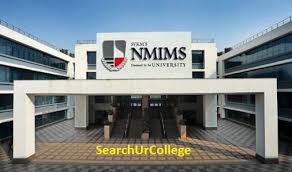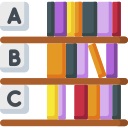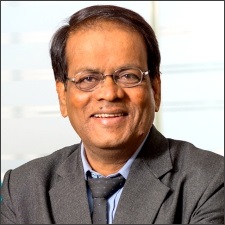
NMIMS Mumbai Sarla Anil Modi School of Economics
|
Quick View of NMIMS Mumbai Sarla Anil Modi School of Economics |
|
|
Established In |
2010 |
|
Location |
Mumbai |
|
College Type |
Private |
|
Also, Know as |
SAMSOE |
|
Accepted Exam |
NMIMS NPAT |
|
Courses |
B.sc, M.sc |
|
Facilities |
Gym, WIFI, Library, Sports, Canteen |
Sarla Anil Modi School of Economics (SAMSOE), Mumbai is a private institution founded in 2010 in India's financial capital of Mumbai, Maharashtra. SAMSOE is affiliated with the Narsee Monjee Institute of Management Studies (NMIMS) and is recognised by the All India Council for Technical Education (AICTE). The Institute offers two courses in Economics: B.Sc. (Hons.) and M.Sc. (Hons.). Admission to the B.Sc. (Hons.) in Economics course will be based on the results of the NMIMS-NPAT Entrance Exam. Admissions to M.Sc. (Hons.) in Economics will be made on the basis of scores obtained in the Institute's Entrance Exam.
Courses
Highlights
- STAR Group and DNA named it the 'Best Emerging Institute' at the 9th Innovative Education Awards in 2017.
- Placement in prestigious firms such as Ernst & Young and TresVista with an average CTC of 4.5 LPA
- Eminent speakers from institutional and academic bodies such as SEBI, RBI, and IIT Mumbai will deliver guest lectures.
- Industrial collaborations with Kotak Mahindra Bank, Six Capital, and SAS for supplementary courses and training
- Established: 2010, as part of NMIMS (Deemed-to-be-University), Mumbai.
- Courses Offered: Offers B.Sc. in Economics and M.Sc. in Economics with an emphasis on analytical and quantitative skills.
- Curriculum: Focuses on modern economics, quantitative techniques, and application-oriented learning to prepare students for careers in economics and related fields.
- Faculty: Experienced faculty with strong academic backgrounds and industry experience.
- Internships and Placements: Provides excellent placement support with top recruiters from sectors like consulting, banking, financial services, and public policy.
- Infrastructure: State-of-the-art facilities with modern classrooms, well-stocked libraries, and research resources.
NMIMS Sarla Anil Modi School of Economics Awards & Recognition
- Sarla Anil Modi School of Economics was ranked third in the India Today-MDRA Best College Survey 2020 for Best Emerging Arts College.
- According to the India Today-MDRA Best College Survey 2020, Sarla Anil Modi School of Economics is the 37th best arts college in India.
- Sarla Anil Modi School of Economics was ranked third in the India Today-MDRA Best College Survey 2019 for Best Emerging Arts College.
- National Finals of the RBI Policy Challenge 2019.
- Regional and Zonal Round Winners of the RBI Policy Challenge 2019
- According to the India Today-MDRA Best College Survey 2018, Sarla Anil Modi School of Economics is the 36th best arts college in India.
- Sarla Anil Modi School of Economics has won the prestigious 'Best Emerging Institute Award.'
- Sarla Anil Modi School of Economics student named "South Asia's Next Economist"
NMIMS Mumbai Sarla Anil Modi School of Economics Course
The Sarla Anil Modi School of Economics (SAMSOE) at NMIMS Mumbai offers comprehensive programs in economics, including a B.Sc. in Economics and an M.Sc. in Economics. These courses focus on building a strong foundation in economic theory, quantitative methods, and real-world applications. The B.Sc. Economics program spans three years and covers diverse topics such as microeconomics, macroeconomics, and econometrics. The M.Sc. Economics program is more advanced, with a focus on research and data analysis, preparing students for careers in academia, research, or industry.
- B.Sc.Economics
- M.Sc.Economics
NMIMS Sarla Anil Modi School of Economics Admission
Students can pursue a three-year BSc and a two-year MSc in Economics at the NMIMS Sarla Anil Modi School of Economics. This school's 2021 admissions process began on January 2o for the MSc programme, followed by BSc applications in February. Candidates interested in admission must apply online at the NMIMS Mumbai Deemed-to-be University's official website. Admission to NMIMS Sarla Anil Modi School of Economics is entirely based on an entrance exam.
Admission to the Sarla Anil Modi School of Economics is based on entrance exams administered by the Deemed-to-be University. During the application process for BSc and MSc, an entry fee of Rs 1,800 and Rs 2,000 is required.
- Admission to the BSc in Economics is contingent on a passing score on the NMIMS - NPAT exam.
- MSc admission is based on an entrance exam administered by the institute.
Sarla Anil Modi School of Economics Admission in B.sc (Hons)
Admission to the B.Sc. (Hons.) in Economics programme with a 300-person intake is based on a candidate's performance in 10+2 (Relevant Stream) or equivalent and the NMIMS-NPAT Entrance Exam.
- CBSE – A minimum of 60% is required.
- Valid Score for the NMIMS-NPAT Entrance Exam.
Sarla Anil Modi School of Economics Admission in M.sc (Hons)
SAMSOE offers a two-year full-time M.Sc. (Hons.) in Economics programme with a maximum enrollment of 30 students. Candidates must have a Bachelor's degree with a minimum of 60% in aggregate. Selection to the M.Sc. (Hons.) in Economics programme is based on the results of a written test followed by a personal interview.
NMIMS Sarla Anil Modi School of Economics Admission Process
- Online registration is available at www.nmims.edu.
- Fill out the application form with all of the necessary information.
- Online payment of INR 1,800 is required for registration.
- The allocation of seats through NMIMS Counselling determines the final selection of the programme.
NMIMS Sarla Anil Modi School of Economics Course & Eligibility
|
Course |
Eligibility |
|
B.sc (Hons) |
10+2 with 60% + NPAT |
|
M.sc (Hons) |
Graduation with 60% |
NMIMS Mumbai Sarla Anil Modi School of Economics Fees
The Sarla Anil Modi School of Economics (SAMSOE) at NMIMS Mumbai offers a Bachelor of Science (B.Sc.) in Economics, a three-year full-time undergraduate program
|
Course |
Duration |
Fees |
|
B.Sc.Economics |
4 Years |
3,50,000/- |
|
M.Sc.Economics |
2 Years |
2,50,000/- |
NMIMS Mumbai Sarla Anil Modi School of Economics Review
The Sarla Anil Modi School of Economics (SAMSOE) at NMIMS Mumbai is known for its well-structured B.Sc. Economics program, aligned with modern industry needs. Students praise the quality faculty, who make challenging subjects more approachable.
The school offers good infrastructure with modern facilities, though the campus size is limited. Placements are competitive, with multiple NMIMS schools competing for similar roles. Despite higher fees, students find value in the academic rigor and NMIMS' reputation. The environment is competitive yet supportive, offering a well-rounded experience.
|
Component Ratings (Out of 5) |
|
|
Placements |
3.9 |
|
Infrastructure |
4.2 |
|
Faculty & Course Curriculum |
4.8 |
|
Crowd & Campus Life |
4.1 |
|
Value for Money |
4.1 |
NMIMS Mumbai Sarla Anil Modi School of Economics Ranking
The Sarla Anil Modi School of Economics (SAMSOE) at NMIMS Mumbai has earned a strong position in India’s academic rankings. According to India Today 2024 rankings, it is placed #39 out of 186 colleges in India and #7 in Maharashtra for arts and economics program
|
Category |
2024 |
|
Humanities & Social Sciences |
39 |
NMIMS Sarla Anil Modi School of Economics Placement 2020-21 (B.sc Economics)
- The total number of students is 91.
- The number of students who have chosen to participate in placements is 28.
- 18 students were placed.
- 10 students will be placed.
|
Highest Salary |
INR 19 L |
|
Average Salary |
INR 7.6 L |
NMIMS Mumbai Sarla Anil Modi School of Economics Recruiter
placement cell, which facilitates job opportunities with multinational corporations (MNCs), leading firms, and start-ups. Graduates from the school are often placed in well-known companies like Deloitte, EY, KPMG, and J.P. Morgan.
Faculty (10)
';|
S.No |
Faculty |
|
1 |
Nahid Fatema Assistant Professor |
|
2 |
Amita Vaidya Director |
|
3 |
Sneha L. Thayyil Assistant Professor |
|
4 |
Esha Khanna Assistant Professor |
|
5 |
Sneha Kotian Adjunct Assistant Professor |
|
6 |
Mohd. Imran Khan Assistant Professor |
|
7 |
Pallavi Gupta Assistant Professor |
|
8 |
Dr. Niladri Sekhar Bagchi Assistant Professor |
|
9 |
Soumya Sankar Chakraborty Assistant Professor |
|
10 |
Dr. Shivani Yadav Assistant Professor |
Facilities

AC Classrooms

Hostel

Labs

Ransomware by ./M789

Wi-Fi Campus
Contact
V. L. Mehta Road, Vile Parle, West, Mumbai, Maharashtra, India, Pin Code - 400 056
-
PGDM-Post Graduate Diploma in Management
Total Fee: INR 745000
-
B.Com Bachelor of Commerce
Total Fee: INR 240000
-
PGDM-Post Graduate Diploma in Management
Total Fee: INR 745000
-
B.Com Bachelor of Commerce
Total Fee: INR 240000
-
PGDM-Post Graduate Diploma in Management
Total Fee: INR 745000
-
B.Com Bachelor of Commerce
Total Fee: INR 240000
-
PGDM-Post Graduate Diploma in Management
Total Fee: INR 745000
-
B.Com Bachelor of Commerce
Total Fee: INR 240000
Highlights
- International Institute of Business Studies (IIBS) is an AICTE Approved college which is recognized by Ministry of HRD, Government of Indias
- IIBS rated India’s No.1 emerging B-School in placement by Samaja Parivarthana
- Faculty of IIBS consists of experienced corporate faculty with 65% Ph.D. holders
- Ranked 2nd among 'Top 10 Southern B Schools' by Silicon India, 2017
- Ranked 3rd in Placement among the Best B-School in India 2017 by Silicon India
Modern Facilities
- Smart Classroom: IIBS provides fully equipped classroom with air-conditioned, projectors, remote controlled LCD and high speed connected computers and cordless microphones
- Library: It is fully equipped by highly information recourses like latest periodicals, reference texts, management text books, national and international journals and DVDs and well organized
- Digital Library: Students of IIBS can be access the digital library through any computers by using their ID and password
- Auditorium: IIBS auditorium is fully furnished and laced with all modern devices to more impactful view
- Hostel: IIBS provides hostel accommodation for boys and girls with mesh facility
Conducting IIMs have been changed the pattern of the CAT exams several times over the years. It is extremely beneficial for the aspirants to know the CAT paper pattern as it helps in preparation and the aspirants can prepare according to the pattern and weightage of the topics.
Overview of the Exam Pattern of CAT 2020
| Mode of the Exam | Online Only |
|---|---|
| Total number of Questions | 100 |
| Total Marks | 300 |
| Duration of the Examination | 3 hours (180 minutes) |
| Sectional Division of the Paper | 3 sections |
| Types of the Questions | Both MCQs and Non MCQs |
| Marking Scheme |
For Correct Answers → +3 marks For Incorrect Answers → -1 mark For Unattempted Questions → No marks |
| Name of the Sections |
1. Verbal Ability & Reading Comprehension 2. Logical Reasoning & Data Interpretation 3. Quantitative Aptitude |
This Exam is conducted once in a year usually in the month of November on online mode and it is expected that this year this exam will held in the last week of November. The question paper contains 100 questions to be solved in 3 hours. 3 marks are assigned for correct answer and 1 mark is deducted for wrong answer in CAT Exam. English is the only medium of answering the questions. Each question consists of four choices from which only one is correct, candidates have to select the right answer from the given options.
CAT question paper consists of three sections divided as
- 1. Verbal and Reading Comprehension (VARC)
- 2. Data Interpretation & Logical Reasoning (DI & LR)
- 3. Quantitative Ability (QA)
Overview of the Exam Pattern of CAT 2020
| Section’s Name | Number of Questions | Duration (in mins) |
|---|---|---|
| Verbal and Reading Comprehension (VARC) | 34 | 60 |
| Data Interpretation & Logical Reasoning (DI & LR) |
VA → 10 Questions RC → 24 Questions |
60 |
| Quantitative Ability (QA) |
DI → 16 Questions LR → 16 Questions |
60 |
| Total | 100 | 180 minutes (3hours) |
Verbal Ability and Reading Comprehension Section
This section is a combination of two sub-sections namely Verbal Ability (VA) and Reading Comprehension (RC). The main focus of this section is on the English language skills of the candidates and how they understand and elucidate the paragraphs and Passages. This section consists of 34 questions, 10 questions of Verbal Ability and 24 questions of Reading Comprehension. Verbal ability sub-section consists of questions related to Para-jumbles, Summary based questions, Sentence Correction and Completion. The other sub-section, Reading Comprehension is based on the questions related to Vocabulary, title etc.
Logical Reasoning & Data Interpretation Section
This section is also divided into two sub-sections, one is Logical Reasoning (LR) and other is Data Interpretation (DI). A total of 32 questions are asked in this section, 16 questions from both the sub-section. LR section contains solvable questions generally from the topics like inequalities, symbol operations, direction sense test etc. On the other hand DI section is a little difficult and time-consuming section as it consists of several confusing data case lets questions. This section contains tricky question and a little mistake in understanding the case lets can lead the candidates to attempt all the questions from a particular set incorrectly.
Quantitative Aptitude Section
This section is a standalone section which comprises only numerical questions from different topics of Math. A total of 34 questions are asked in this section. This section contains questions based on Basic Arithmetic, Number System, Geometry, Algebra, Modern Math etc. The questions in this section ranges from easy to moderately high and can be answered easily with proper practice of the syllabus of Quantitative Aptitude.

|
Prof. Prabhakar H
B.Sc., PG in HRD, PG in Training & Development |

|
Prof. Prabhakar H
B.Sc., PG in HRD, PG in Training & Development |

|
Prof. Prabhakar H
B.Sc., PG in HRD, PG in Training & Development |

|
Prof. Prabhakar H
B.Sc., PG in HRD, PG in Training & Development |

|
Prof. Prabhakar H
B.Sc., PG in HRD, PG in Training & Development |

|
Prof. Prabhakar H
B.Sc., PG in HRD, PG in Training & Development |
Facilities













CAT 2020 will be conducted in the following cities:
| Port Blair | Kurnool | Nellore | Tirupati |
| Vijaywada | Visakhapatnam | Chittoor | Itanagar |
| Dibrugarh | Guwahati | Silchara | Aurangabad |
| Gaya | Muzaffarpur | Patna | Chandigarh |
| lorem | lorem | lorem | lorem |
Contact Us
#75, Muthugadahalli, Bangalore North Jala Hobli, near International Airport airport(New Airport), Bangalore ( Karnataka)
admission@iibsonline.com









